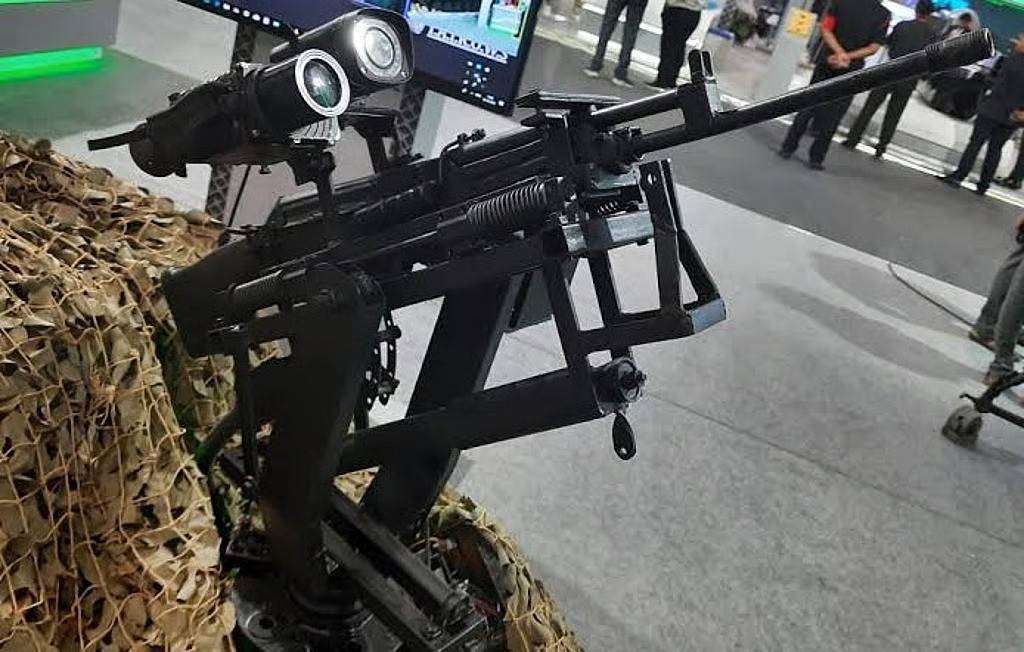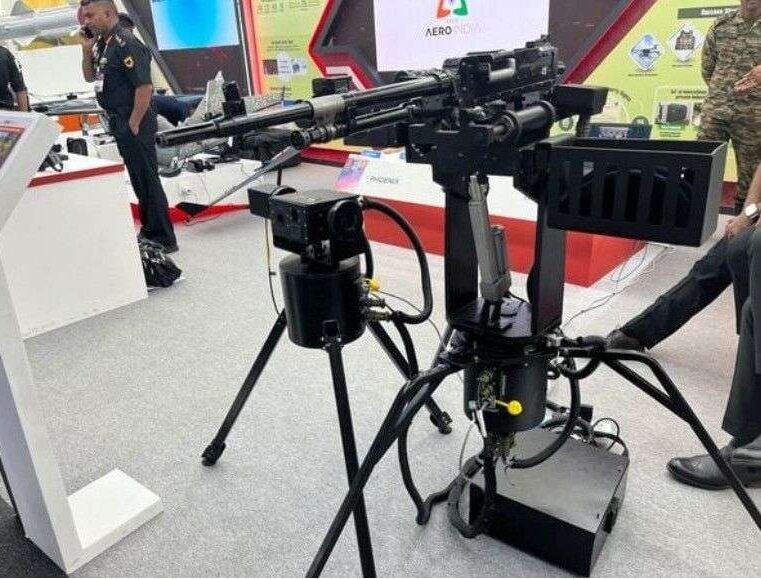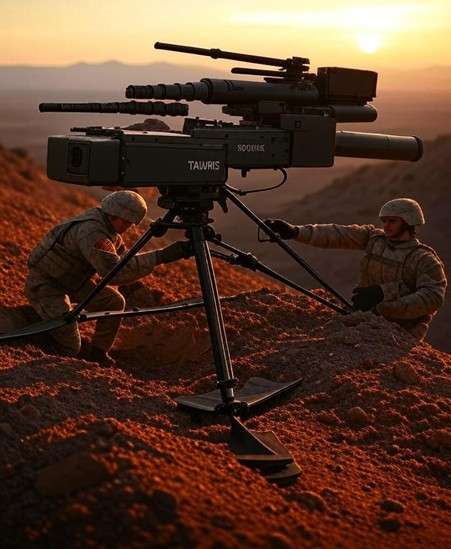In a world where technological supremacy often translates into victory in battle, the Indian Army is leading the charge with its development of the Ten AI Weapon System (TAIWS). This is a significant step forward in border security technology, because it virtually combines artificial intelligence and target engagement to deter infiltration to across the Line of Control (LoC). Developed with Colonel Ashish Dogra leading the charge and showcased at Aero India 2025, TAIWS is an autonomous obstacle that can detect, track, and engage targets in a fraction of a second with far greater accuracy, still under critical human oversight.
Central Elements and Armaments of TAIWS
TAIWS uses a 7.62 mm medium machine gun on a tripod as the centrally mounted weapon that can hit targets up to 1.8 kilometers away. As well as the weapon, TAIWS utilizes different sensors including GPS, a magnetometer, an extra-accelerometer (inclinometer) and a laser rangefinder that communicates with the machine gun and assessment of its surroundings. However, TAIWS system also incorporates an AI sensor package which has two separate cameras. The main camera is a day camera with 40x optical zoom and there is a thermal imaging camera to see at night for up to 2 kilometers with one of the cameras at least being able to continuously see (in varying light from dusk to dark) for monitoring purposes. In addition to the main control unit and the two cameras, TAIWS has also a network of secondary cameras spaced between 500 meters to 2 kilometers apart depending on the type of terrain and this is the brilliance of TAIWS system. Therefore, even if the target cannot be seen from one direction, another secondary camera may detect that target enabling the high probability target locations to close all escape routes.

AI Powered Sensor Suite and Surveillances
TAIWS uses AI algorithms to align, detect, and track targets in 10 milliseconds, faster than the blink of an eye, which is about 100-400 milliseconds. This speed is very important when engaging with lethal or non-lethal threats. 110 milliseconds is potentially a lifetime when defending borders to ensure it saves time, money, resources, and human life. TAIWS is attempting to improve the speed, of how long it takes you to harm or kill a target once it has already been detected. TAIWS uses a human-in-the-loop mechanism where a soldier in a bunker must authorize you to fire your weapon.
Capabilities of TAIWS to Enhance Border Security
In extensive tests, TAIWS achieved a notable 100% first-round hit probability, confirming its accuracy and dependability. By utilizing a “kill box,” or engagement area of approximately 50 by 50 meters, hostile entities cannot avoid being hit. TAIWS also could predict where its moving targets will be headed, allowing TAIWS to fire before the targets could evade action. This increases the combat effective level of the device when implemented. The modular design can easily allow for future upgrades, attachments, and includes work to ensure an IP65 rating (weatherproof) is fulfilled which is preferable when working along the borders in extreme conditions. By providing sensor fusion in real-time, with threat and situation awareness, gives commanders actionable intelligence to be more dynamic.

TAIWS represents a disruptive moment in India’s defence sector where the capability and speed of AI combines with the judgement of human operators in one integrated and sophisticated system. The full capabilities of TAIWS can change the paradigm for advanced counter-terrorism operations along the LOC and provide a feasible and intelligent defence mechanism against infiltration. As military modernization continues in India, technologies such TAIWS will play an pivotal role in establishing security, operational efficiency, and protecting soldiers and civilians in the middle of some of the most inhospitable environments.

